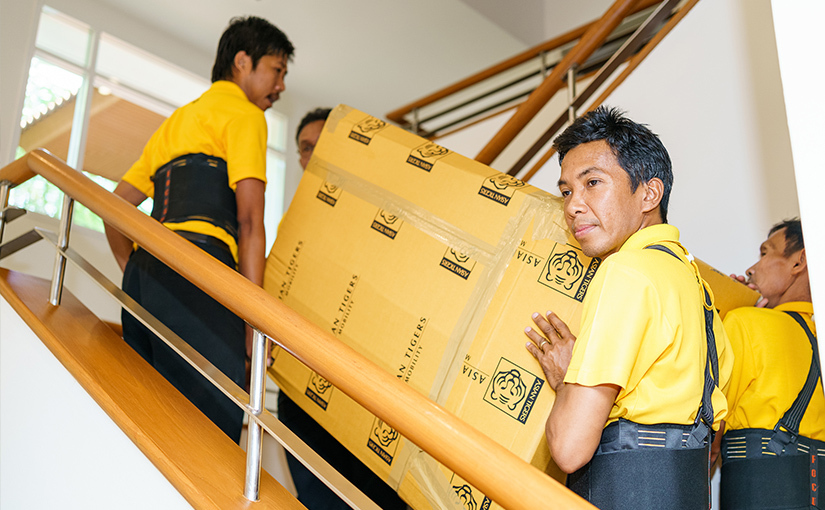How to Pack Bedding for Moving: A Simple Step-by-Step Guide
Among other challenging tasks connected with moving, packing appears to be one of the most time-consuming. Large bulky things, like a bed or bedding-related stuff, require a bit more effort and time to be perfectly packed. It is how to pack bedding for moving that will save you a whole lot of time and space and grant peace of conscience concerning the safety of your goods while relocating. Here is an easy step-by-step guide on doing the same. Pack everything from comforters, pillows, etc. while maintaining organization and peace of mind throughout your move.
1. Source the Right Packing Materials
Before embarking upon the act of packing, in this case of bedding items, ensure all the required materials are available. The same shall facilitate the action smoothly and in providing protection to the contents during the action of movement.
Essential Packing Materials
- Large, Sturdy Boxes: Be sure to select the very best boxes that are both sizable enough to fit the bedding and strong enough to sufficiently support it without tearing.
- Vacuum-Seal Bags: Pack large amounts of comforters, pillows, and blankets in stacks of vacuum-seal bags to greatly reduce the bulk, saving you lots of space, and keep your bedding out of the dust and moisture.
- Plastic Bags: If you do not have enough vacuum bags, these will serve the purpose of keeping your bedding off the dirt and moisture.
- Adhesive Packing Tape: Good quality adhesive packing tape keeps your boxes and bags tight and secure.
- Labels and Markers: Labels on your boxes will keep you from forgetting all the contents that are inside them, thereby helping you during unpacking.
2. Washing and Drying Your Bedding
After all, you should clean the bedding first—surely this is going to be a very long process and after, you wouldn’t want the beddings to be packed with dirt or wet, which will just turn out to be a cause of molding, mildewing, or smelly odors.
Steps to Prepare Your Bedding
- Wash- Every bedding like sheets, pillowcases, blankets, and comforters should be washed. In washing, one should utilize a gentle cycle. This is to wear it, wear and tear it.
- Dry- Dry all the articles thoroughly. The reason is sometimes damp bedding might become mildew during the move, so dry it out.
- Check for damage: Carefully check your bedding for tears, stains, or worn spots. Those bedding items that are damaged should be repaired or disposed of prior to packing.
3. Organize and Tidy Up Your Bedding
It puts your state of mind into being organized once you sort your bedding before packing, and you carry only what you really need. Helpful in the event you have a huge collection of beddings or downsizing.
Sorting Tips
- Separate by size: Place all twin, queen, and king sizes together for easy setup and unpacking at your new place.
- Seasonal Bedding: If you have different sets of bedding for different seasons, you might want to pack them separately. You see, because this way, it’ll be easy to open what you want right away upon reaching the new place.
- Decluttering: Know that this is a chance for you to declutter. Bedding that you do not use or need, you may either give away or dispose of.
4. Use Vacuum-Seal Bags if You Have Bulky Beddings
Comforters, pillows, and blankets are all large objects that can take up a lot of room in your moving boxes. Use some vacuum-seal bags to make these objects much smaller and reduce their size to a fraction of the original.
How to Use Vacuum Seal Bags
- Put Bedding inside the Bag: Squash the comforters, blankets, or pillow in a fold and place it inside the vacuum-seal bag. Make sure that the bag is not stuffed too much because then it might not zip up very well.
- Zip up the Bag: Zip up the bag as directed by the manufacturer. In most cases, you would need to zip the bag closed before you vacuum the bag as you try to get the air out of the bag.
- Box Storage: After the sealing process, you have to package your vacuum-sealed bags in a box. This will keep you from getting the bags punctured as you transport them.
5. Pack Sheets and Pillowcases Separately
Sheets and pillowcases, unlike comforters or blankets, are not as bulky. But also, that does not mean that they do not always need proper packing against wrinkles and getting filthy while in the moving process.
Packing for Sheets and Pillowcases
- Well-Put: You can fold sheets and pillowcases well so that they do not get wrinkled and acquire small space. You can then pack them in big plastic bags that you can seal.
- In Boxes: After this, you can take this bag and put it in the box while careful not to overstress the bag. You can thus take sheets and pillow cases in relatively smaller boxes so you can carry them with ease.
6. Protect the Pillows and Mattresses
Mattresses and pillows are also bedding pieces. They must also be treated similarly. Protecting these will ensure they remain clean and are not torn or otherwise damaged during the moving process.
Pack the Pillows
- Mattress Bags: A mattress bag or cover protects the mattress from dirt, dust, and moisture. These bags are available in every size possible: be it the twin, full, and queen, even up to king, for that extra protection of your precious mattresses.
- Put in the Lorry Securely: If you will be moving on your own, then ensure that the mattress can be put in securely so it will not fall over during the drive.
- Packing Pillows: Use pillowcases to wrap your pillows to keep them clean on the journey. Use either the large-sized plastic bags or what was being used to carry a good box to keep your pillows in. They can also be kept in vacuum-seal bags to be kept well and consume less space.
7. Label and Seal Your Boxes
Always label your boxes. You want to do this for organizational purposes, and it’s really going to help you when you start to realize you’re in the last few rooms when you’re at the new house. Opening the car door with a “bedding” label on the box will give you an idea of where it belongs.
Labeling Tips
- Room and Contents: Label the box with the room where you will be using the items inside it, and list a few of the items you’ve packed in the box, for example, “Master Bedroom – Sheets and Blankets.”
- Delicate Items: If you have any kinds of items inside that could be delicate, such as bedding in things like quilts and throws, it will require being dealt with even more carefully. Therefore, label the box as “Fragile” so the handlers would be informed and deal with it carefully in packing.
- Tape Well: Tape the boxes after labeling. Apply extra tape at the bottom of every box so that it will not break when loaded.
8. Unpack Bedding First
When you finally arrive at your destination, you immediately will want to make your bed. If you have packed the bedding properly and labeled it, then you can do so with just a few minor moves and thus get this done quickly.
Unpacking Tips
- Bedding: Unpack your bedding first so that your bed is ready for you on your first night at the new house or apartment. This is very useful if the first night is tense. You’ll finish up without trying to sleep where you didn’t plan to
- Check Over Items: Please ensure that bedding has been checked for damage or dampness. If it is going to need washing or airing, then do it as soon as possible.
Conclusion
Understand the tips of how to pack bedding for moving, and the whole process will not only be simpler but stress-free. Follow this simple guide step by step, and your bedding will be safe, organized, and ready for the first night in your new abode. If you prepare properly and pack right, moving will not stress you out at all.










